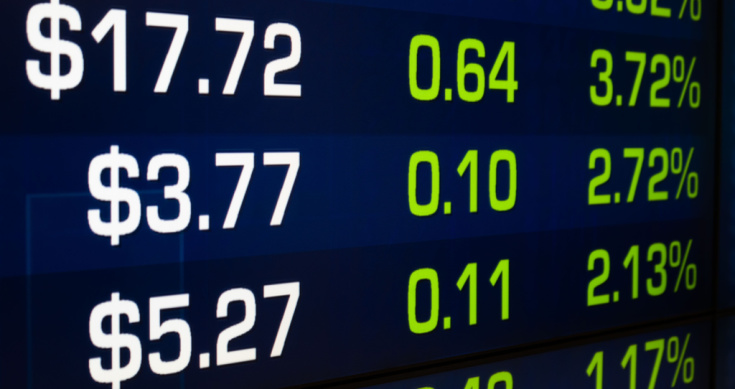The market has already priced in a dividend drop from ANZ with their share price down -32% over the last year. Next week NAB and WBC will announce whether their dividends drop or not, along with the official announcement from ANZ.
“The consensus estimates (average of broker analysts) for next week’s dividend announcements are WBC to increase dividends by +$0.02, NAB to increase by +$0.01, and ANZ to drop -$0.02” says Vincent Cook, Senior Equities Analyst with CBG Asset Management (CBC).
Most investors are concerned that this drop in dividend from ANZ is a sign of more disappointing news to come. While WBC and NAB are forecast to increase their dividends, CBA maintained their February 2016 dividend at the same amount as February 2015; $1.98 – which is the first time CBA hasn’t increased their dividend since climbing out of the GFC in 2010.
Options market has lower estimates
There are two main ways to gauge how much the market is estimating the next bank dividends will be. The first is the broker estimates (above) and the other method it to see what is being paid for on the options market on the ASX.
On current prices, the options market is much more pessimistic on the Bank’s dividend announcements than the consensus broker estimates.
The options market is full of day-traders and market-makers that trade on these estimates every minute of every day. These traders literally risk millions of dollars on each dividend announcement which keeps their focus tuned into every possibility of dividend changes down to the last minute.
At the moment the options market is forecasting ANZ to announce a dividend drop of $0.06, WBC to increase $0.005, and NAB to drop $0.065. Those numbers are lower than the broker averages.
WBC and CBA are better positioned:
“WBC and CBA are in a much more comfortable position with their dividends because they are higher return on equity (ROE) businesses, which means they have a higher sustainable payout ratio”. Says Cook.
Cook continues “ANZ and NAB are expected to pay out above their stated target ranges” and “Given expected profits, dividends and rate of credit growth, ANZ and NAB are likely to be marginal in terms of their ability to increase capital organically.“ This means that over the last 6 months ANZ and NAB haven’t made enough money to pay the dividends their shareholders have grown accustomed to, and keep the company’s cash reserves in the healthy manner the board has aimed to maintain.
At this stage these deviations at ANZ and NAB look to be minor and there are always a few tools up a large company’s sleeve to keep the act going and everyone happy. One such method Cook notes is that “(ANZ and NAB are) likely to require discounted or partially underwritten Dividend Re-investment Plans.”
DRPs means that the banks get to keep the cash that would have been paid out to shareholders as dividends in exchange for giving shareholders new shares.
What else to look out for:
Cook notes some other key points that investors should pay attention to “Apart from dividends, key areas of focus for the market will be the extent to which bad debt charges increase, coming off a low base, the direction of net interest margins and the extent of organic capital generation.”
Big 4 Bank announcement dates:
- Westpac (WBC) Monday 2nd of May;
- ANZ Tuesday the 3rd;
- NAB Thursday the 5th; and
- CBA quarterly update on Monday the 9th of May









